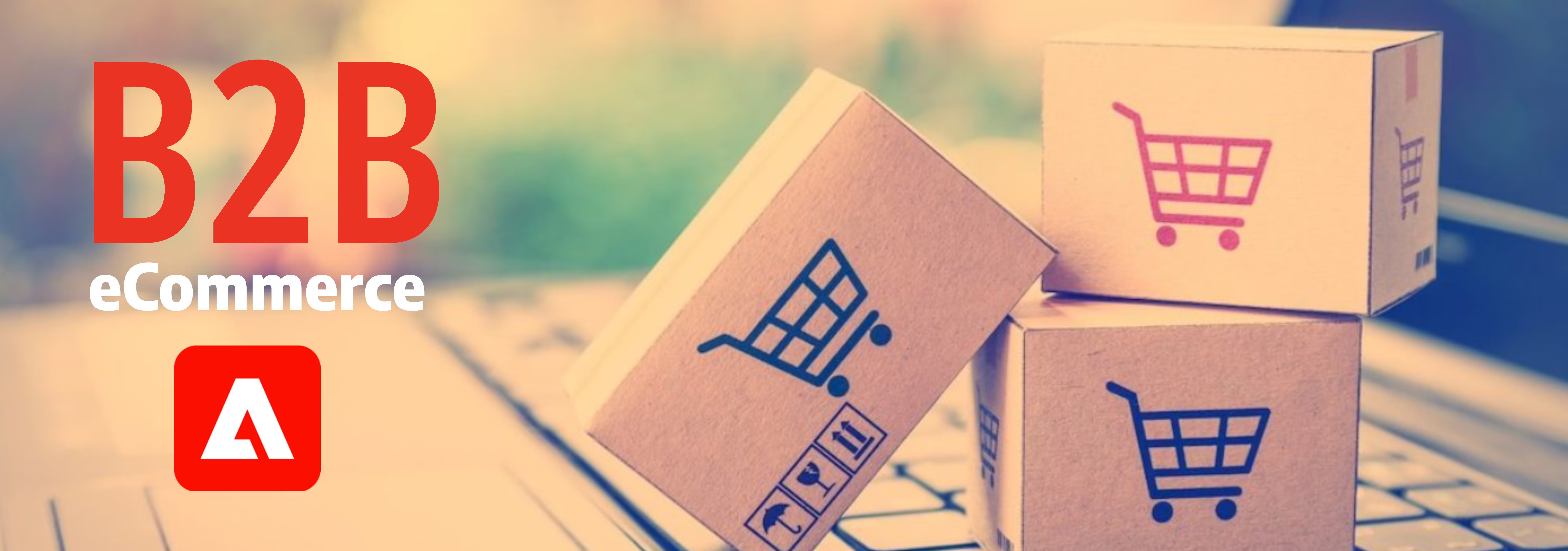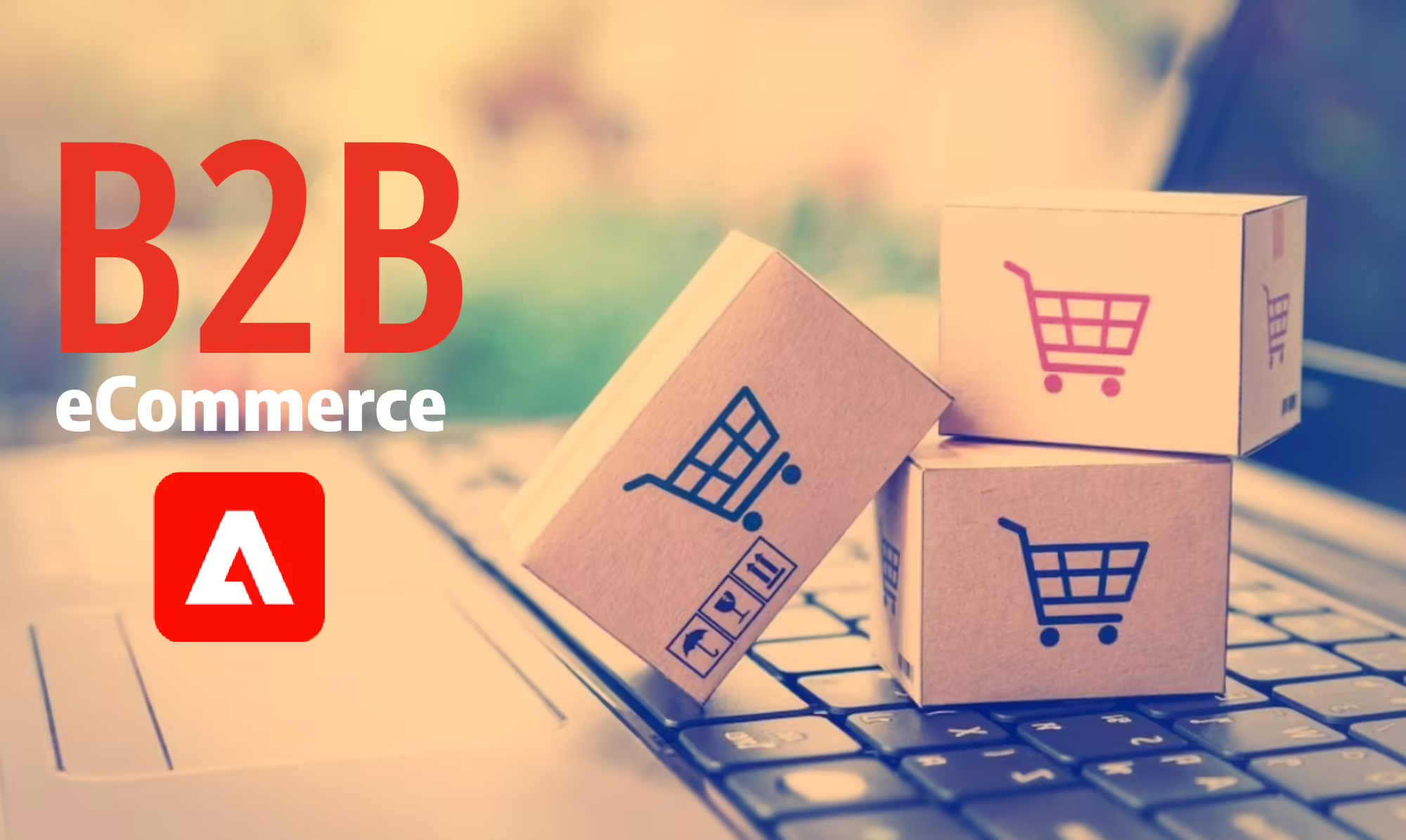
We have witnessed the journey of moving online from offline for B2B businesses. Merchants and vendors are eager to expand and operate their B2B business digitally! The world of e-commerce is undergoing a revolutionary transformation, and the lines between B2C and B2B are becoming thin. A single website can be used for B2C and B2B businesses. Let's admit that B2B solutions are an absolute necessity. Adobe Commerce, a leading player in the e-commerce platform arena, has risen to the challenge by offering a comprehensive B2B suite that is second to none. This article delves deep into Adobe Commerce's B2B features, exploring the key elements that empower merchants to take their online businesses to new heights.
Table of Contents
- The Blurring Lines of B2C and B2B
- B2B eCommerce landscape projection
- Why is personalization in B2B such a big obstacle?
- Adobe Commerce's Response to B2B Challenges:
- Shared Catalogs: Personalized Shopping Experiences for B2B Customers
- Company Accounts: Streamlining Operations for Larger Enterprises
- Negotiable Quotes: Online Price Negotiations for B2B Transactions
- Purchase Order Approvals: Accelerating Order Processing for Complex Transactions
- Requisition Lists: Boosting Customer Retention and Order Frequency
- Quick Order: Time-Saving Convenience for B2B Customers
- Conclusion:
The Blurring Lines of B2C and B2B
The rapid expansion of e-commerce has prompted many businesses to use a single website for both B2C and B2B customers. However, the article argues that this approach may not be suitable for the distinct needs of B2B transactions. It highlights the importance of having a dedicated B2B website to effectively personalize the online shopping experience for these customers.
B2B eCommerce landscape projection
The COVID-19 pandemic has accelerated digital transformation in the B2B industry, creating new business opportunities. As per Forrester Research, B2B e-commerce is projected to grow at a CAGR of 10.7% between 2022 and 2027, which presents manufacturers, distributors, and wholesalers with exciting prospects to re-evaluate their strategies and invest in new technology.
However, companies must prioritize understanding their customers' needs and expectations to stay competitive. With clients increasingly expecting better digital experiences, merchants must adapt their processes accordingly or risk losing them to the competition. Personalization is a key factor in delivering customized and seamless digital experiences, and companies are focusing more on delivering personalized and customized experiences to their shoppers.
Although personalization can be a challenge in the B2B industry, companies that invest in digital transformation can expect new opportunities. Specific B2B sectors, particularly those new to online commerce, may still be grappling with adaptation. Still, it is crucial for companies to understand that the shift to digital is transforming the B2B commerce landscape, and they must adapt to stay ahead of the curve.
Why is personalization in B2B such a big obstacle?
Let's see:
- B2B commerce is complex and requires significant investment in eCommerce solutions
- Brands should prioritize addressing complex factors such as strict product specifications, large credit deals, multi-approval from different parties, and complex shipping and logistics arrangements before personalizing the customer journey.
- B2B decision-making processes are more complex than B2C since multiple stakeholders are typically involved
- Personalizing content or experiences for specific individuals becomes more challenging as each stakeholder may have different needs and pain points.
- B2B sales take longer than B2C sales
- B2B customers have unique requirements that may be challenging to address through personalization
- B2B customers are more concerned with a product or service's functionality or compatibility than its look, feel, or emotional appeal.
B2B personalization demands a tailored and strategic approach. To achieve this, it is crucial to understand the specific requirements and concerns of each stakeholder and decision-maker. However, despite the challenges involved, brands are determined to create superior and seamless customer experiences. Encouragingly, according to a survey by Adobe, a whopping 63% of companies are investing in new site features and eCommerce solutions to deliver customized experiences to their clients. With the right digital tools and a shrewd strategy, you can confidently tackle these complexities and emerge victorious!
Adobe Commerce's Response to B2B Challenges:
Given the current situation, it's important to consider the circumstances thoughtfully. Adobe Commerce stands out as a solution that comprehends the particular requirements of B2B merchants. The platform provides a comprehensive B2B suite, which includes functionalities tailor-made to satisfy the desires of merchants who aim to enhance their online sales through dedicated B2B websites.
Shared Catalogs: Personalized Shopping Experiences for B2B Customers
One of the most popular features of Adobe Commerce B2B is the ability to create custom catalogs and apply them to specific customer groups. This means that merchants can control the categories and products that each customer sees when they log in, as well as set different prices for each product. Shared Catalogs enable merchants to personalize the product catalog that each customer sees upon login. This feature allows merchants to keep customers focused on only the categories and products they can purchase while also displaying tailored pricing. For B2B businesses, this is an incredibly powerful feature that can increase customer loyalty and conversion rates.
Company Accounts: Streamlining Operations for Larger Enterprises
Adobe Commerce's Company Accounts is a robust feature that helps businesses manage their company profiles, set up multiple accounts, define roles, and set purchase permissions for their team members. The company admins can add multiple members to their account and restrict their access to specific areas of the website. With Company Accounts, merchants can allow larger organizations to add multiple team members to their company account on the website and control what they can and cannot do. This feature enables better management of bigger accounts by ensuring that the right people have the appropriate permissions. As a result, customers will no longer have to place their orders through a single account on the website.
Negotiable Quotes: Online Price Negotiations for B2B Transactions
In B2B transactions, prices are often subject to negotiation and can vary depending on the quantity of goods being ordered. Adobe Commerce's Negotiable Quotes feature is a great solution for B2B merchants as it allows buyers to request special pricing from their assigned sales manager. The sales manager can then review the request, approve it, or suggest a counteroffer. This feature is helpful for merchants who have sales managers that interact with specific customers on a regular basis. It enables them to have a face-to-face conversation online through the website, leading to better relationships and more upselling opportunities.
Purchase Order Approvals: Accelerating Order Processing for Complex Transactions
For larger businesses, a streamlined buying process that involves multiple stakeholders is crucial. Adobe Commerce provides an integrated Purchase Order Approvals system that enables businesses to establish tailored approval processes based on order value, customer group, or SKU. By automating and streamlining the approval process, businesses can accelerate order processing, minimize errors, and ensure that purchase orders comply with their internal procurement policies. With Adobe Commerce, businesses can take control of their buying process and optimize their procurement operations for maximum efficiency.
Requisition Lists: Boosting Customer Retention and Order Frequency
Requisition Lists are similar to 'favourites' for businesses. They are lists that customers can create, modify, and use to add items directly to their basket from their account. For merchants, this means better customer retention and more frequent orders. It also means a smoother shopping experience for your customers, as they don't have to start from scratch every time they want to place an order. Your customers can quickly place repeat orders directly from their account without having to search through the entire product catalog to find the items they need to purchase again.
Quick Order: Time-Saving Convenience for B2B Customers
B2B customers usually have a clear idea of what they want, including the specific product codes (SKUs). Adobe Commerce's Quick Order feature enables your customers to place orders for hundreds of products quickly and easily. All they need to do is copy and paste a list of SKUs into a text box or upload a CSV file that contains the product codes and quantities they need. The system will automatically add these items to their basket, allowing them to check out immediately. In the world of business, time is money. With Quick Order, your customers can save time and have a better shopping experience by placing orders quickly and conveniently on your website.
Conclusion:
Without a doubt, Adobe Commerce has meticulously crafted its B2B features to meet the unique demands of B2B businesses precisely. This powerful suite empowers merchants to effortlessly keep pace with evolving customer expectations, significantly boost sales, foster better customer relationships, and greatly improve operational efficiencies.
Unlock Your B2B Potential with Adobe Commerce
Maximize your B2B eCommerce potential with Adobe Commerce. Get in touch with Navigate Commerce for expert guidance.

